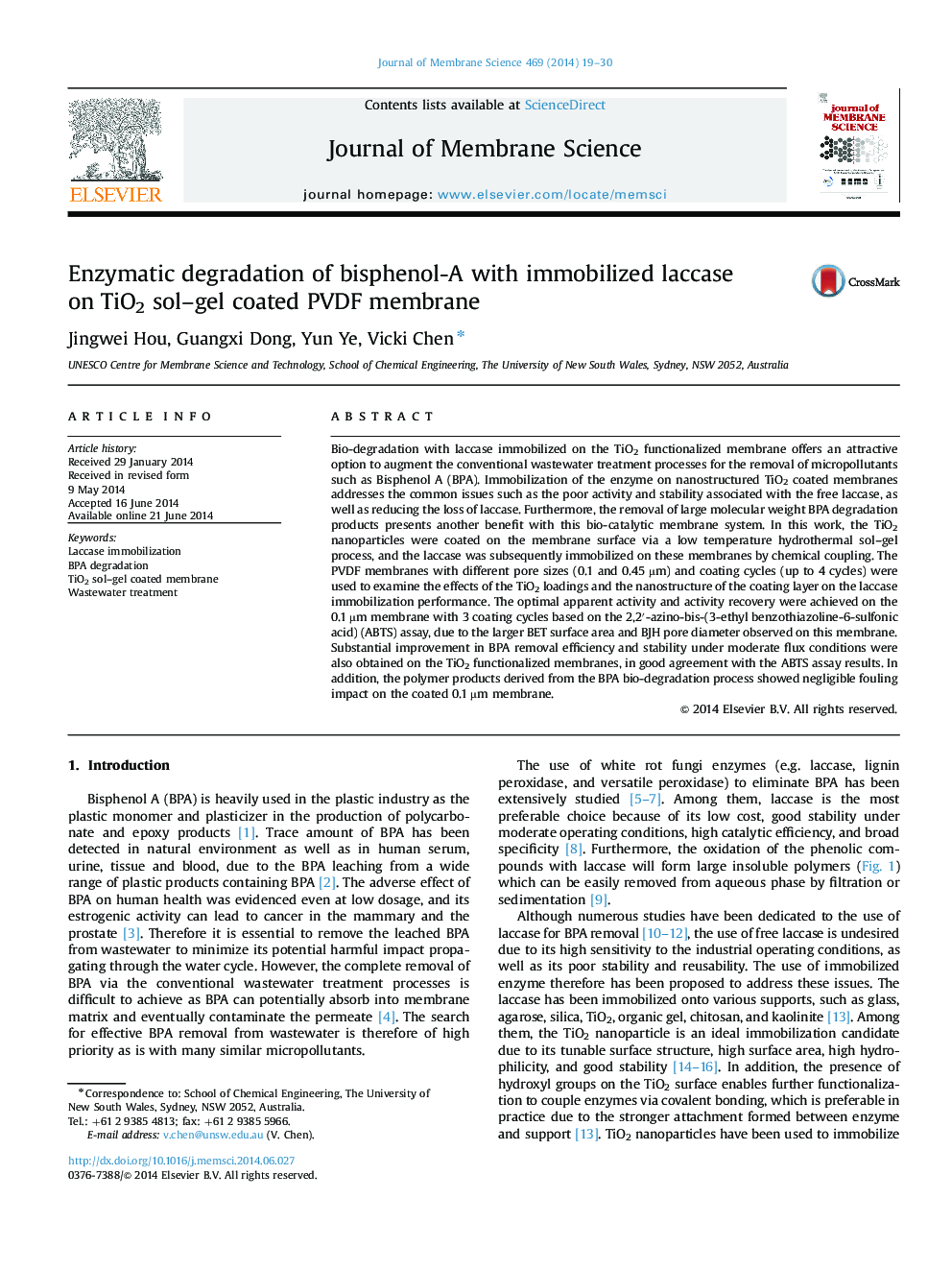| کد مقاله | کد نشریه | سال انتشار | مقاله انگلیسی | نسخه تمام متن |
|---|---|---|---|---|
| 633479 | 1456030 | 2014 | 12 صفحه PDF | دانلود رایگان |

• Laccase was covalently immobilized on the TiO2 sol–gel coated PVDF membranes.
• Membrane pore size and coating cycles had significant impact on the coating layer properties.
• Bio-catalytic membrane performance was affected by the coating layer properties.
• Bio-catalytic membranes had good BPA degradation efficiency over repeated use.
Bio-degradation with laccase immobilized on the TiO2 functionalized membrane offers an attractive option to augment the conventional wastewater treatment processes for the removal of micropollutants such as Bisphenol A (BPA). Immobilization of the enzyme on nanostructured TiO2 coated membranes addresses the common issues such as the poor activity and stability associated with the free laccase, as well as reducing the loss of laccase. Furthermore, the removal of large molecular weight BPA degradation products presents another benefit with this bio-catalytic membrane system. In this work, the TiO2 nanoparticles were coated on the membrane surface via a low temperature hydrothermal sol–gel process, and the laccase was subsequently immobilized on these membranes by chemical coupling. The PVDF membranes with different pore sizes (0.1 and 0.45 µm) and coating cycles (up to 4 cycles) were used to examine the effects of the TiO2 loadings and the nanostructure of the coating layer on the laccase immobilization performance. The optimal apparent activity and activity recovery were achieved on the 0.1 µm membrane with 3 coating cycles based on the 2,2′-azino-bis-(3-ethyl benzothiazoline-6-sulfonic acid) (ABTS) assay, due to the larger BET surface area and BJH pore diameter observed on this membrane. Substantial improvement in BPA removal efficiency and stability under moderate flux conditions were also obtained on the TiO2 functionalized membranes, in good agreement with the ABTS assay results. In addition, the polymer products derived from the BPA bio-degradation process showed negligible fouling impact on the coated 0.1 µm membrane.
Figure optionsDownload high-quality image (364 K)Download as PowerPoint slide
Journal: Journal of Membrane Science - Volume 469, 1 November 2014, Pages 19–30